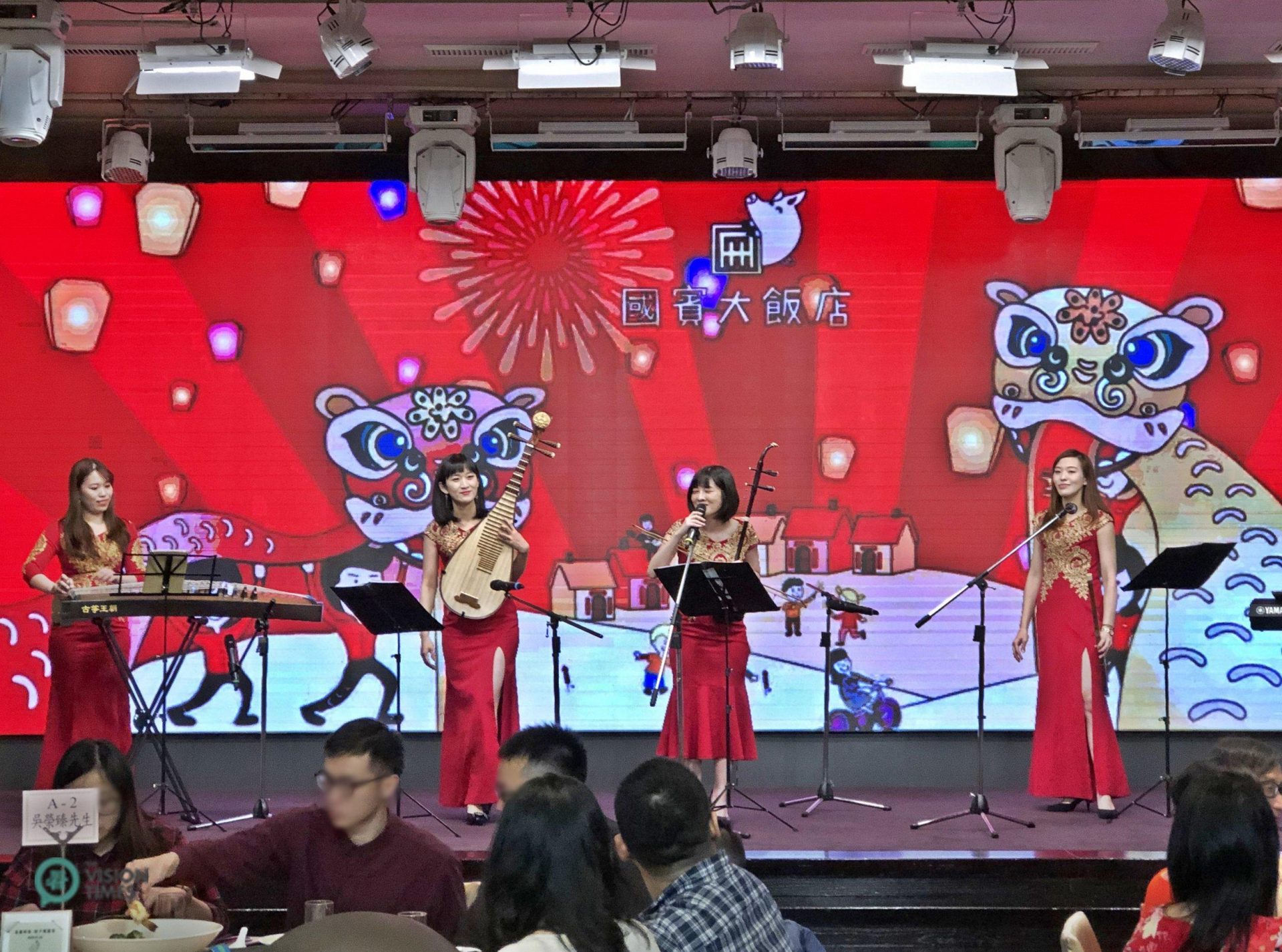Lunar New Year, also known as Chinese New Year or the Spring Festival (chūn jié 春節), is the most important festival for Taiwanese people, and the Lunar New Year’s Eve dinner is the most essential part of the festival. Commonly referred to as the “reunion dinner (nián yè fàn年夜飯, or tuán yuán fàn 團圓飯),” the feast is the occasion for family members to get together to celebrate the coming of the New Year.
Please watch the following video of the New Year Reunion Dinner in Taiwan.
Traditionally, Taiwanese people have their New Year’s Eve reunion dinner at home, and a variety of delicious traditional dishes are served at this most important dinner of the year.

Since the shape of dumplings (jiǎo zi 餃子) resembles that of ancient silver ingots (yuán bǎo 元寶), Taiwanese tend to eat dumplings on this important occasion to symbolize bringing in wealth and prosperity for the New Year. At the same time, eating dumplings implies sending away the old and welcoming the new. Many people are of the belief that the more dumplings one eats at the reunion dinner, the more money he or she can make in the coming year.

Fish is an indispensable dish at the reunion dinner, as the Chinese pronunciation for fish (yú魚) is a homophone of the character for surplus (yú餘). So along those lines, the reason why people attach much importance to this dish is because the popular Chinese phrase “nián nián yǒu yú” (having fish every year年年有魚/餘)” symbolizes a surplus every year.

Always leave leftovers at a reunion dinner
Additionally, due to the fact that leaving some leftovers signifies abundance and prosperity in the coming year, it has become a norm that the fish served at the reunion dinner is not eaten completely. Some families only eat the middle of the fish and let the head and tail remain intact. This practice is thought to derive from the Chinese phrase “having both a head and tail (有頭有尾yǒu tóu yǒu wěi),” which means completeness.

“Buddha Jumps Over the Wall (fú tiào qiáng佛跳牆),” also known as “Buddha’s Temptation,” is a traditional Chinese delicacy famous for its curious name and rich taste. Eating “Buddha Jumps Over the Wall” on Lunar New Year Eve is symbolic of reunion. It has become more and more popular among people in Taiwan to have this traditional dish at the reunion dinner. As it takes much time and complicated procedures to prepare the ingredients, most families order this dish from a restaurant, a convenience store, or just order it online nowadays.

Mustard greens, also known as perennial vegetables (jiè cài芥菜, or cháng nián cài長年菜), are a standard vegetable dish for the reunion dinner. Taiwanese people like to have them on Lunar New Year’s eve because they are the homonym for the Chinese phrase for long life (cháng nián 長年). So eating mustard greens suggests longevity.

Spring rolls are a common dish for the reunion dinner too, because their golden cylindrical shape looks like gold bars, which are symbolic of wealth. In the meantime, eating spring rolls on Lunar New Year’s Eve is also indicative of marking the beginning of spring.

Glutinous rice cake (nián gāo年糕) is usually deep-fried and eaten as a dessert. Since glutinous rice cake in Chinese is the homophone for the Chinese phrase “higher every year (nián nián gāo年年高), Taiwanese people eat the rice cake in hopes that everything will be better in the coming new year, including the growth of children.

Other commonly seen dishes at the reunion dinner in Taiwan include chicken (symbolizing togetherness and rebirth), pork (denoting peace), sausages (indicating happiness), lobsters (signifying endless money rolling in), shrimp (implying fortune and wealth), mullet roe (representing hope and good fortune), scallops (suggesting fertility), etc.

Due to the significant social changes in recent years, it has become trendy to have the reunion dinner at a restaurant nearby instead of having it at home. Because of this, people have to make reservations at a restaurant long before Lunar New Year’s eve. In particular, it’s hard to reserve a table at fancy restaurants in big cities.

After eating the reunion dinner, it’s time for giving away red envelopes (hóng bāo紅包, or yā suì qián壓歲錢). With money inside, red envelopes are usually given to children and elders to wish them good luck and fortune in the coming New Year.








